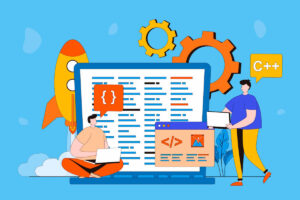In today’s fast-paced world, businesses of all sizes are constantly looking for ways to streamline their processes and improve efficiency. One way to achieve this is by utilizing a low code platform for developing applications. These platforms allow users to build software with minimal coding knowledge, making it easier and faster to create custom solutions for their specific needs.
If you’re using a PHP low code platform, you may be wondering how you can customize it to better suit your requirements. In this how-to guide, we’ll walk you through some tips and tricks for customizing your PHP low code platform to make it work for you.
1. Understand Your Requirements
Before you start customizing your PHP low code platform, it’s essential to understand your specific requirements. What features do you need? What functionality is essential for your business processes? By having a clear understanding of your needs, you can tailor your platform to meet these requirements effectively.
- Conduct a thorough analysis of your business processes and identify the key features that are essential for your applications.
- Engage with stakeholders to gather requirements and ensure that all necessary functionalities are considered.
- Document your requirements in detail to serve as a reference point throughout the customization process.
2. Customize Templates
Many PHP low code platforms come with pre-built templates that you can use to create applications quickly. However, these templates may not always align with your branding or design preferences. To customize your platform, consider creating your templates or modifying existing ones to match your company’s branding and design standards.
- Assess the existing templates provided by the platform and identify areas where customization is needed.
- Use CSS and HTML to make visual changes to the templates and ensure consistency with your brand identity.
- Test the customized templates across different devices to ensure responsiveness and user-friendliness.
3. Configure Data Models
Data models are an essential component of any application. When customizing your PHP low code platform, make sure to configure your data models accurately. This includes defining relationships between different data entities, setting up validation rules, and ensuring data integrity within your applications.
- Use a visual data modeling tool to create and manage data models effectively.
- Implement proper normalization techniques to avoid data redundancy and ensure efficient data storage.
- Consider scalability and future data requirements when designing data models to accommodate growth.
4. Integrate Third-Party Tools
To enhance the functionality of your PHP low code platform, consider integrating third-party tools and services. Whether you need to incorporate payment gateways, analytics tools, or communication services, integrating these tools can expand the capabilities of your applications and provide a better user experience.
- Research and select reputable third-party tools that align with your business needs and goals.
- Follow integration guidelines provided by the tool’s documentation to ensure seamless integration with your platform.
- Test the integrated tools thoroughly to verify functionality and performance before deploying them in production.
5. Implement Custom Logic
While low code platforms offer a drag-and-drop interface for building applications, there may be instances where you need to implement custom logic or perform complex operations. To customize your PHP low code platform, consider adding custom scripts or plugins to handle these specific requirements effectively.
- Use PHP scripting to create custom logic and implement complex business rules within your applications.
- Leverage APIs and webhooks to connect external systems and automate processes for enhanced functionality.
- Document custom logic implementations for future reference and maintenance purposes.
6. Test and Iterate
Once you’ve customized your PHP low code platform, it’s crucial to test your applications thoroughly. Ensure that all features work as intended, and there are no bugs or issues that could affect the user experience. Additionally, be prepared to iterate on your customizations based on user feedback and changing requirements.
- Develop test cases to validate each feature and functionality of your customized applications.
- Conduct integration testing to ensure seamless communication between different components of your platform.
- Gather feedback from users and stakeholders to identify areas for improvement and iterate on your customizations accordingly.
Conclusion
Customizing your PHP low code platform can help you create tailored solutions that meet your business needs effectively. By understanding your requirements, customizing templates, configuring data models, integrating third-party tools, implementing custom logic, and testing your applications, you can optimize your platform for success. Follow these tips and tricks to make the most of your PHP low code platform and achieve your business goals.
Have questions about customizing your PHP low-code platform? We’d love to hear from you! Get in touch with our team to discuss your specific needs and explore the possibilities.
FAQs:
1. What is the first step in customizing a PHP low code platform?
To customize a PHP low code platform, the first step is to understand your specific requirements and needs before making any changes.
2. How can you customize templates on a PHP low code platform?
To customize templates on a PHP low code platform, you can create your templates or modify existing ones to align with your company’s branding and design standards.
3. Why is configuring data models important when customizing a PHP low code platform?
Configuring data models is essential when customizing a PHP low code platform as it involves defining relationships between data entities, setting up validation rules, and ensuring data integrity within applications.
4. How can integrating third-party tools enhance the functionality of a PHP low code platform?
Integrating third-party tools and services can enhance the functionality of a PHP low code platform by expanding the capabilities of applications and providing a better user experience through features like payment gateways, analytics tools, and communication services.












+ There are no comments
Add yours